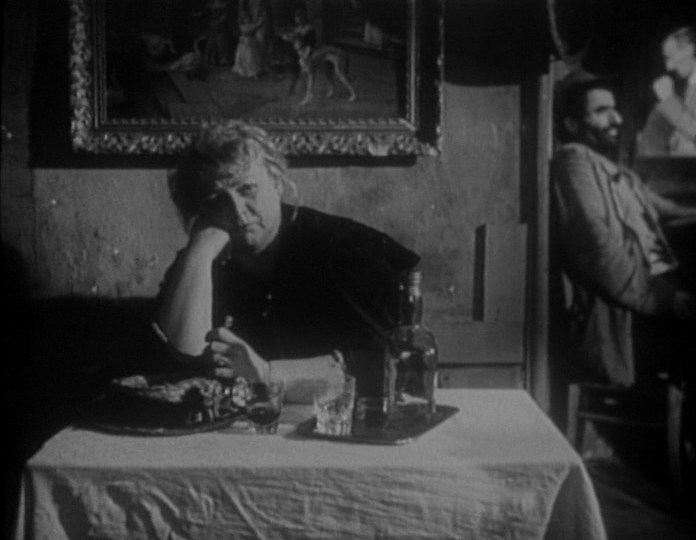“Fame will go by, and so long, I've had you, fame.”Something's Got to Give (George Cukor, 1962)
Nov
10
Forget-Me-Not Day

Marilyn on set during the infamous pool scene, four days days after singing Happy Birthday at JFK's birthday gala. DPs: Franz Planer & Leo Tover.
Everyone assumed that Ellen Arden, swept away during a yacht race, was gone. But there she is, years later, and very much alive.
– Marilyn Monroe, 1962
The story ends on August 4, 1962, almost two months after she was fired from the shoot. Marilyn Monroe was found dead in her home. She was 36 years old.
usa
Werner Herzog Eats His Shoe (Les Blank, 1980)
Nov
8
Cook Something Bold Day

Herzog prepares his left suede Clarks in Alice Waters' restaurant kitchen. DP: Les Blank.
“Bacchus gives us his blood so we may be born again.”Seconds (John Frankenheimer, 1966)
Nov
7
International Merlot Day

Nora (Salome Jens), seen from the back with her dress half unzipped, holds up a glass of red wine while kissing a reluctant Antiochus (Rock Hudson) during the ecstatic Bacchanal scene. DP: James Wong Howe.
At a bacchanalia, Rock Hudson's Antiochus Wilson finally strips down his hesitancy and realises he has a second chance at life, as a member of the new generation. To the Queen of wine! To Bacchus! To Pan!
Director of photography James Wong Howe's very controlled framing of the (initially censored) pre-Woodstock #Bacchanalian scene beautifully frames this pinnacle moment and proved almost too much for American censors.
Goshogaoka [御所ケ丘] (Sharon Lockhart, 1998)
Nov
6
Play Basketball Day

Girls from the Moriya City Goshogaoka junior high school girl basketball team practising their blocking technique. Cibachrome print © Sharon Lockhart, 1997 (via).
Within the boundaries of Sharon Lockhart's static camera, girls from Goshogaoka junior high school practice basketball. In six uninterrupted 10 minute scenes, we see them warm up and train several typical moves, shots, and blocks. With the camera set in one position, some of the action happens off-screen, resulting in unrehearsed synchronised choreography.
Mondo Hollywood: Hollywood Laid Bare! [Mondo Hollywood] (Robert Carl Cohen, 1967)
Nov
1
World Vegan Day

Lobby card. Proto-hippie Gypsy Boots (Robert Bootzin), here going ape over a banana, outshocks polite society with his vegan (or is this vegetarian?) mindset. In the background what appears to be a bed of nails. DP: Robert Carl Cohen.
Opens with Nature Boy and #garlic propagandist Gypsy Boots.
– What's that?
– Tea.X the Unknown (Leslie Norman + Joseph Losey, 1956)
Oct
24
scoff

Two soldiers on nightshift ready to eat. One of them hands a mess tin with grub to the other when there's a sound. DP: Gerald Gibbs.
“Any resemblance between HELLZAPOPPIN’ and a motion picture is purely coincidental”Hellzapoppin' (H.C. Potter, 1941)
Oct
24
National Crazy Day

Olsen and Johnson break all the walls. DP: Elwood Bredell.
– tagline
The Animal (Walter Ungerer, 1976)
Sep
30
National Ghost Hunting Day

Jo (Jo Moore) in the couple's cabin. She's seen reflected in a mirror, together with what appears to be an older woman in an old photograph. DP: Walter Ungerer.
The Medium (Gian Carlo Menotti, 1951)
Sep
18

Madame Flora (Marie Powers) by herself at a small table in a shady bar. DP: Enzo Serafin.
“When I get myself – cleaned up and straightened out, I'm going down and get a ship and I'm going to wind up in South Sea islands. That's where I wanna go!”On the Bowery (Lionel Rogosin, 1956)
Sep
14
National Sober Day

Finnish poster. DP: Richard Bagley.
Someone mentions getting sober.